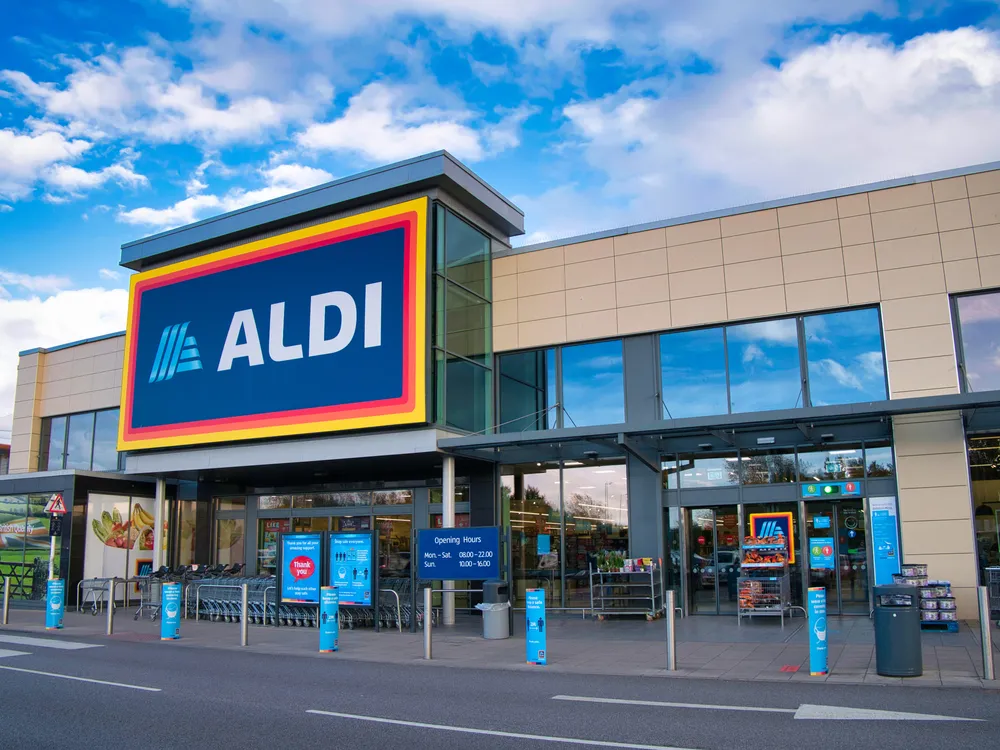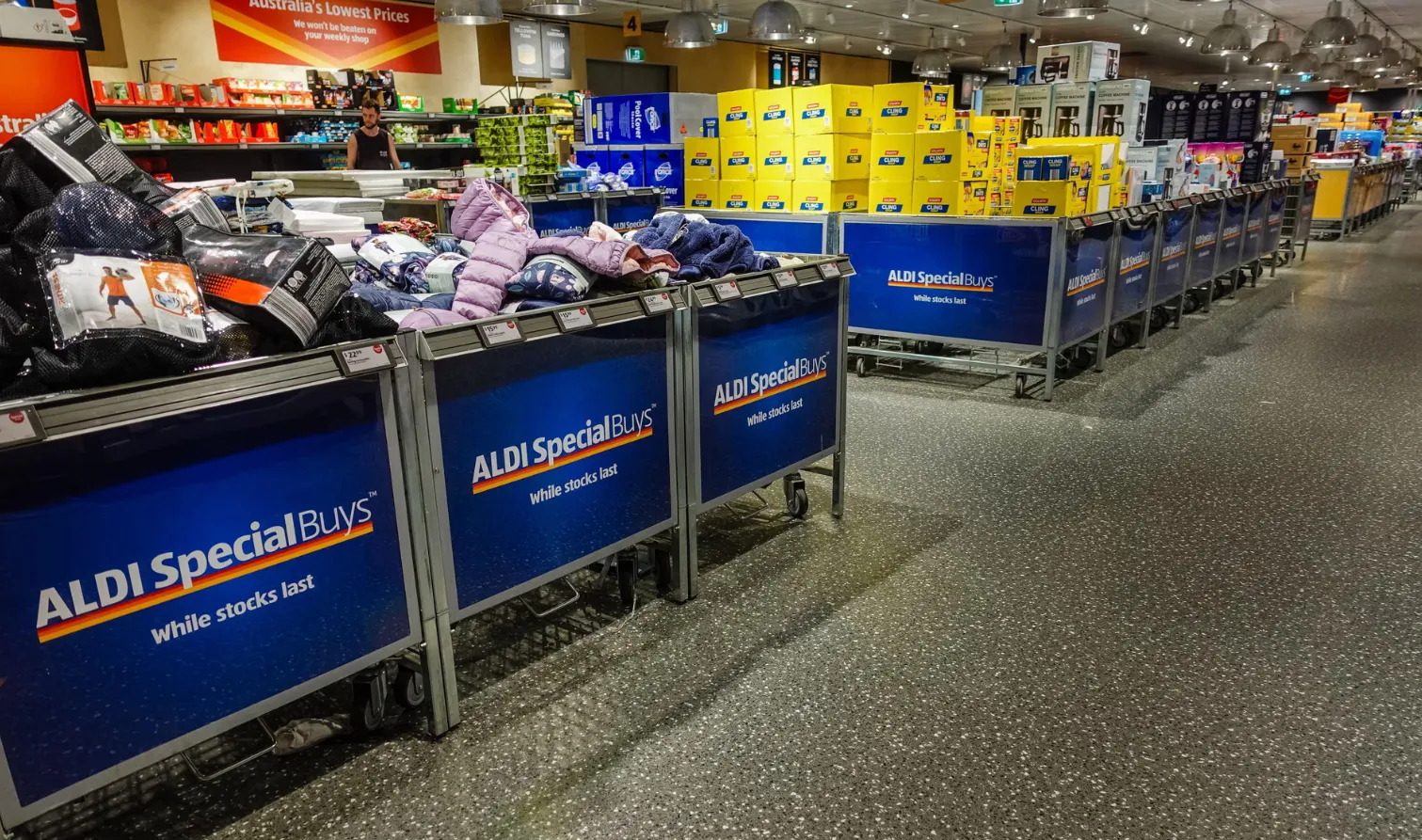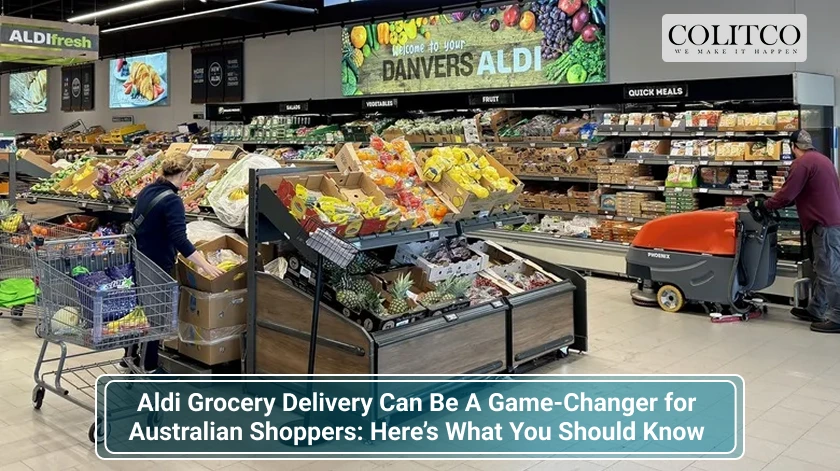Aldi finally delivers on customer demand
Aldi has officially entered the online shopping market in Australia, launching its Aldi grocery delivery trial in Canberra through a partnership with DoorDash. After years of resisting delivery services to maintain its low-cost business model, the German discount giant now aims to match competitors Woolworths and Coles in the convenience space, bringing groceries directly to customers’ doorsteps.
The long-awaited move marks the first time the platform has offered a full grocery delivery service in Australia, a change that comes in response to increasing consumer demand and growing online shopping habits, particularly post-pandemic.

Aldi [Credit: Shutterstock]
A strategic partnership with DoorDash
Starting from July 9, Canberra residents can access over 1800 the products via the DoorDash app, including fresh fruit and vegetables, meat, seafood, dairy, bread, and household staples. While the grocery delivery service is initially limited to the ACT, the retailer plans to expand it nationally, with a target of reaching 85 per cent of Australian households.
Simon Padovani-Ginies, Australia’s group buying director, emphasised the importance of meeting customer expectations.
“Our customers have been asking for us to go online for quite some time now as there are times when you simply can’t get to a grocery store,” he told NewsWire.
“They wanted Aldi to go online so they can help make more affordable grocery options in that convenience space and that is what we are really excited about.”
Not just about competition
Despite the supermarket price war heating up, the company insists its decision is not about competing with Coles and Woolworths. Instead, it is about aligning with consumer preferences.
“It is certainly a growing market but our customers have been telling us for a number of years, particularly after Covid, that they would love to be able to access our product more conveniently online,” said Padovani-Ginies.
Jordan Lack, Australia’s chief commercial officer, echoed this sentiment.
“Since entering the Australian market, mission has been to deliver high-quality groceries at the lowest prices for Australian households and this ambition remains as strong as ever,” Lack said.
“Through our partnership with DoorDash, we can now literally deliver on this mission directly to Aussies’ doorsteps.”

Aldi claims it is not seeking to compete with Coles and Woolworths despite the supermarket price war. [Credit: picturelibrary/Alamy]
How it works
To use the grocery delivery service, customers need to download the DoorDash app and search for “Aldi”. They can then browse the available products, add items to their cart, and either order on demand or schedule a delivery within a preferred time window.
The trial does not include popular Special Buys, and product availability will depend on local stock levels. One noted limitation is the lack of substitute products in case of out-of-stock items, a concern for some shoppers used to alternatives offered by other supermarkets.
Price differences and delivery fees
While Aldi is renowned for its low prices, the grocery delivery service may come with some cost differences. The retailer has confirmed that prices may vary between the app and in-store shopping. DoorDash will also apply delivery and service fees, as it does for all supermarket partners.
“Those delivery and service fees are standardised across all grocers in the vertical so no matter which grocery supermarket you are buying through on DoorDash, those delivery and service fees are aligned,” Aldi said.
Finder money expert Angus Kidman noted the financial logic behind Aldi’s choice of partner.
“Using DoorDash means no additional labour costs, while still letting it compete with the big two for customers who do want a delivery option,” Kidman told Yahoo Finance.
Aldi versus the competition
Coles and Woolworths already offer widespread online services and have partnerships with delivery platforms including DoorDash and Uber Eats. Both have also invested heavily in their own apps and logistics infrastructure.
While Woolworths and Coles generally maintain consistent pricing between in-store and online items, their delivery services often require a longer wait. Aldi’s delivery model offers a faster turnaround, similar to on-demand services, which could appeal to time-sensitive shoppers.
Aldi still banks on its reputation as the cheapest grocer, a status backed by recent CHOICE research. A March survey found a typical Aldi basket cost $55.35 compared to $58.92 at Woolworths and $59.22 at Coles.
Online grocery market in Australia
Online grocery sales now account for nearly 11 per cent of the overall grocery market, according to E&P analyst Phillip Kimber. Coles and Woolworths both saw strong year-on-year growth in their online segments, with increases of 20 per cent and 22.6 per cent respectively.
Aldi has watched this trend closely and chosen a model that allows it to participate in the space without overhauling its in-store operations or incurring high labour costs. By outsourcing logistics to DoorDash, Aldi can avoid infrastructure costs while still reaching customers seeking convenience.
Also Read: Death Cap Mushroom: The Deadly Ingredient Behind the Leongatha Mushroom Murders
What this means for Aussie shoppers
For customers in Canberra, Aldi grocery delivery is now a reality. The service promises to bring Aldi’s trademark low prices to their doors, albeit with potential price variances and added delivery fees. As the trial progresses, Aldi will closely monitor performance before expanding across Australia.
Despite the catch of slightly higher prices and the need to use a third-party app, many shoppers will likely welcome the added convenience, particularly those with mobility issues or time constraints.
As Aldi Australia continues to evolve, this major shift in how Aussies shop shows the brand is willing to adapt to modern needs while sticking to its core value: keeping groceries affordable.












